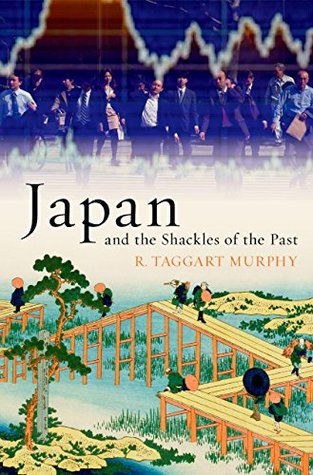More on this book
Kindle Notes & Highlights
Read between
September 9 - September 18, 2015
Something similar took place with all the other borrowings. Continental models in everything from architecture to music, religion, painting, governing institutions, and metallurgy were imported and grafted onto native models. Sometimes the result was a considerable improvement on the original. Even the Chinese, who were loath to grant that outer barbarians could do anything better than they, acknowledged that the Japanese had perfected paper-making and dyeing beyond anything in China itself. Samurai swords were forged of the world’s finest steel until the coming of modern steel-making.
Dishes were adopted—tempura almost certainly stems from Portuguese cooking; before that time, the Japanese had never eaten deep-fried foods; indeed the word itself probably comes from the Portuguese word for time, tempore. The Portuguese influence extended into the language itself; the Japanese word for thank you, arigato, may have come from the Portuguese obbligado, and the Portuguese roots of terms such as pan for bread are obvious.
Implacable Jesuit condemnation of pederasty also hurt efforts to convert Japan’s elite to Christianity. Pederasty had become so institutionalized among the daimyō and the samurai that comparisons have been made with ancient Athens and Sparta; the practice drew the harshest denunciations from Jesuit missionaries, which in turn did not endear them to many among Japan’s ruling elite.
German thinking on state-led industrial development became conventional wisdom among the Meiji leaders. The writings of the German economist Friedrich List were particularly influential; List had been a great admirer of the regime of protective tariffs and explicit subsidies to industry implemented in the young United States by such figures as Alexander Hamilton and Henry Clay; in his National System of Political Economy he advocated comparable policies for his own country. This book was translated into Japanese, complete with an official introduction from the governor of the newly established
...more
The great mid-twentieth-century novelist Mishima Yukio captured all this when he compared Meiji Japan to “an anxious housewife preparing to receive guests” hiding away anything she might think could detract from the image of the “immaculate, idealized life” with which she hoped to impress her guests.
Reality management consisted of a cluster of institutions and practices that ensured that everybody who mattered acted in predictable ways, often manifest in seemingly deliberate, collective decisions not to notice contradictions. A good example is working hours. On the surface, people work eight-hour days and, when overtime is required, companies are supposed to compensate workers with extra pay. And indeed, come 6 p.m., heating or air conditioning goes off, the gates to office buildings and factories close, cleaning crews begin their evening rounds, and skeleton night-time security staff
...more
What made things worse was that the political setup in Japan dictated that all the money that had to be pumped into the economy could not be used in ways that would have done the most good: spending aimed directly at improving the living standards of the urban middle class. Programs such as a complete makeover of Japan’s urban housing stock would have directly created hundreds of thousands of jobs and indirectly stimulated demand by providing space for consumer durables. But given the balance of political power in Tokyo, the money inevitably went instead into lavish infrastructure spending in
...more
It is these people who are now increasingly exploited; the shock absorbers of small, nominally independent companies are being replaced by the shock absorbers of poorly paid, overworked temporary staff. Even worse practices exist. Tales circulate of burakku kigyō (“black companies”), firms that pretend to offer permanent positions but have no intention of actually doing so. These firms take in young people, but then subject them to such demanding and grueling work that the young people leave, allowing them to be replaced by new cohorts of workers at entry-level pay.
but the bishōnen type is one that today usually excites—and is cultivated for—females. One can cite as evidence the contemporary passion for yaoi or boizu rabu (“Boys’ Love”)—tales of homoerotic affairs among impossibly beautiful youths, produced by and for women—or the stadiums full of girls screaming at the products of Johnny’s Jimusho, the talent agency that has for two generations now brought forth an unending stream of pretty boys to prance about on stage and absorb vicariously female adolescent sexual energy.


